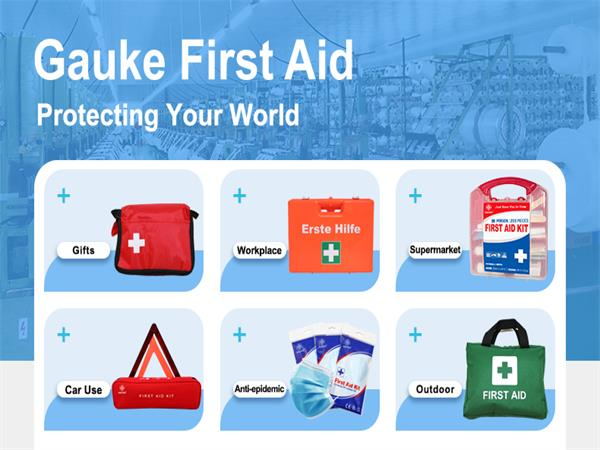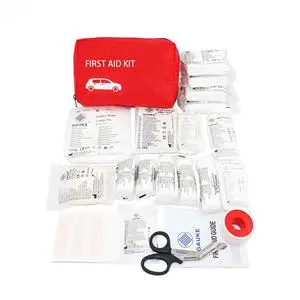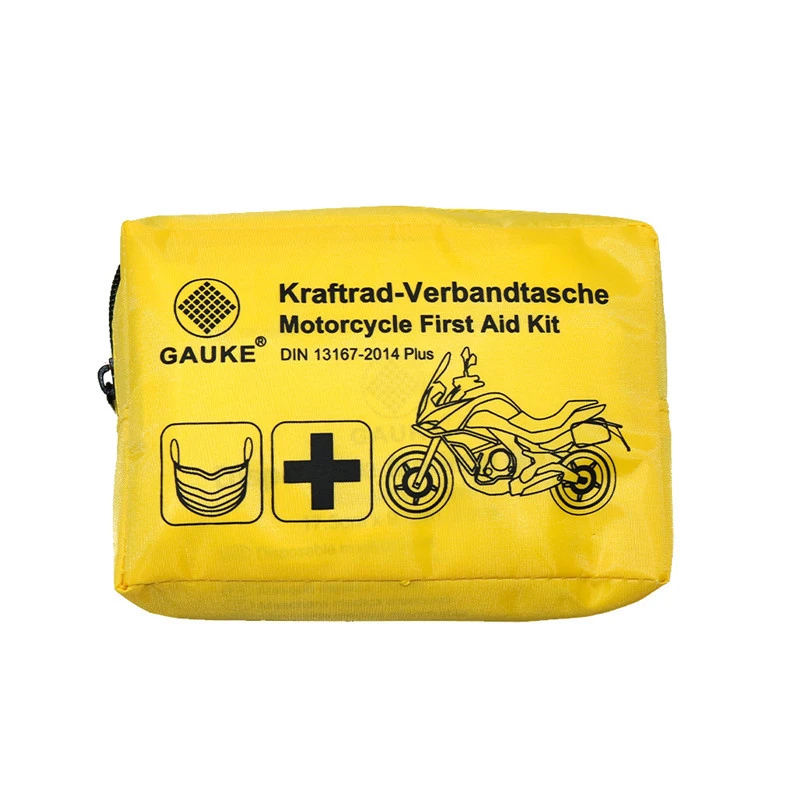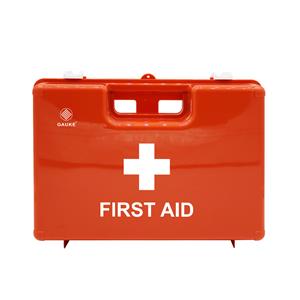First Aid Kit Supplier - Expert First Aid Kit Advice
When choosing supplies from a first aid kit supplier, you should consider the environment in which they will be used. For instance, a hiker will carry first aid equipment in their kit to deal with snake bites, which is an unlikely emergency scenario for an office worker.
So, when selecting first aid equipment, consider all emergency situations you may find yourself in that are most likely to occur in that environment. This article will go over essential gear for first aid kits and how to customize them for various use cases.

Gauke first aid list
First Aid Kit Contents
Every home, office, and workplace should have a well-stocked first aid kit to ensure emergency preparedness. Carefully consider the contents provided by your first aid kit supplier to ensure you will have what you need to deal with everything from minor cuts and sprains to severe burns and insect bites.
A general first aid kit should contain the following:
● Absorbent compresses
● Adhesive bandages
● Adhesive cloth tape
● Antiseptic wipes
● Aspirin
● Space blanket
● Breathing barrier with one-way valve for CPR
● Instant cold compress
● non-latex gloves
● hydrocortisone ointment
● gauze roll
● roller bandage
● sterile gauze pads of various sizes
● thermometer
● triangular bandages
● tweezers
● scissors
The list above is a good start for coping with minor ailments and performing CPR, but every good first aid kit can be customized for even more versatility.
First Aid Equipment for Fractures and Serious Wounds
When making a selection from a first aid kit supplier's inventory, you should ensure you will have access to equipment for dealing with more serious injuries like broken bones and severe wounds, such as:
● Emergency trauma dressing (ACE Wrap)
● Tourniquet
● Wound packing gauze
● Instruction booklet
A tourniquet is the best method for preventing blood loss from large wounds. Makeshift tourniquets created from triangle bandages or whatever else you have on hand are better than nothing, but including a specialized device in your kit is highly recommended. Makeshift tourniquets are prone to failure, and you may waste precious time searching for suitable materials.
Camping and Hiking First Aid Equipment
Camping and hiking have unique risks, such as snake bites, which you are unlikely to experience in the average home or office. Blisters are the bane of hikers, so good hiking first aid kits should contain items to treat and relieve those painful skin conditions.
Sunburn is always a common complaint of campers, especially when it's so easy to forget to regularly apply sunscreen. Aloe vera or sunburn cream can provide some much-needed relief. Splinters are another hazard of camping, which means a fine pair of tweezers and a magnifying glass are essential.
Bandages or bandaids can handle most cuts and scrapes, but you should also carry antiseptic cream to prevent infections. A hydrogen peroxide solution is excellent for washing out wounds before dressing, and a saline solution will help clear grit, ashes, and wind-blown cinder from your eyes.
The outdoors can quickly dry out lips when it's warm and windy, a condition that can get very painful very quickly, so keep some chapstick handy in your first aid kit.
On top of what a general kit contains, you should include the following items from your first aid kit supplier for better emergency preparedness:
● sunburn relief spray
● eye drops
● antibiotic ointment
● Hand sanitizer
● Blister care
● Snakebite kit
● Chapstick or lip balm
When you return from your hike or camping trip, be sure to do a stocktake and place an order with your first aid kit supplier to replenish supplies.
Pain Medications
Pain medications and other medicinal aids are an essential part of any emergency gear. First aid kit suppliers may not supply medications in their products, but it's easy to add them yourself. Product names may differ, depending on where you live, but here are a few to consider including in your first aid kit.
● Aspirin
● Tylenol (Acetaminophen)
● Anti-histamines
● Bismuth tabs
● Dramamine
● Laxatives
● Throat lozenges
● Oral rehydration
● Loperamide / Immodium
If possible, include a supply of any prescription medicines you may be taking. Natural disasters could prevent you from restocking vital supplies during an emergency, so having a few stashed away in your kit could be a lifesaver. You will need to be mindful of children and expiry dates.
More First Aid Tips
It's not always possible to pack everything you need into a first aid kit to get you through every emergency. You can mitigate this issue by Including notes about where useful items may be stored around the house and instructions on how to react in emergencies.
The first responder using the kit may not be a resident or employee, which is why it's a good idea to write an address on the outside of the container. This way, they can quickly relay critical information to emergency services without delay.
Regularly check the stock in your first aid kit, and immediately replace any items you use. Many things in a first aid kit will not last forever and degrade over time. Things like creams, lotions, and pain medication in your kit will have expiry dates, so be sure to replace these as needed, even if you haven't used them.
A regular stocktake every 6 months or so will allow you to reorder the items you need from your first aid kit supplier, so you can always be prepared.
Where to Keep First Aid Kits
Whether you select separate items to create a kit from scratch or you purchase a ready-made one from a first aid kit supplier, you should always have a kit that is easily accessible from wherever you are.
A few key locations to store a first aid kit include:
● The glove box of your car
● Your home (keep it in the medicine cabinet)
● Office
● Warehouses and storerooms
It's also recommended to have a torch and a portable radio stored near the kit, for whenever the power goes out, or you experience a natural disaster. Make sure everyone in the home or workplace knows where the first aid kit is and, just as importantly, knows how to use its contents.
Having good quality equipment from a first aid kit suppliers will be no good to you unless you know how to use everything in it. Find a first aid training facility near you and take their courses so you know you can handle an emergency with the tools you have available.




